30-DAY ULTIMATE ITALY PRIVATE TOUR
HIGHLIGHTS:
- Rome walking in the shade of history
- The Vatican, Popes and power
- Orvieto and Civita, the cities “on the rocks”
- Assisi, the extraordinary land of Francis
- Umbria, the green heart of Italy
- Val d’Orcia, where Man and Nature blend with harmony
- Siena and San Gimignano, power in the Middle Ages
- Florence, an open-air museum
- Pisa, how can it stand?
- 5 Terre, the stunning 5 villages perched on the rocks
- Parma, the art of food
- Milan, the 2,000-years-old trendy capital of Northern Italy
- Lake Como, a scenery for movie lovers
- Venice, when wealthy merchants ruled the Mediterranean
- Alberobello, living in Trulliland
- Matera, the city of stone
- Paestum, when Greeks ruled Italy
- The Amalfi Coast, where divas are at home
- Pompeii, the Roman city fixed in lava
- Castelli Romani, where Romans enjoy life
WHAT'S INCLUDED:
Accommodations in Double Room with Continental Breakfast (*):
- Days 1, 2 & 30: 3* to 5* Hotel in Rome city centre
- Day 3: 3* to 5* Hotel in Orvieto city centre
- Days 4 & 5: 3* to 5* Hotel in Assisi area
- Days 6 to 8: 3* to 5* Country House in Val d’Orcia area
- Days 9 & 10: 3* to 5* Hotel in Florence city centre
- Days 11 & 12: 3* to 5* Hotel in Cinque Terre area
- Days 13 & 14: 3* to 5* Hotel in Parma
- Days 15 & 16: 3* to 5* Hotel in Milan city centre
- Day 17: 3* to 5* Hotel in Verona city centre
- Days 18 to 21: 3* to 5* Hotel in Venice city centre
- Day 22: 3* to 5* Hotel in Trani area
- Days 23 & 24: 3* to 5* Hotel in Fasano area
- Day 25: 3* to 5* Hotel in Matera city centre
- Days 26 to 28: 3* to 5* Hotel on the Amalfi Coast
- Day 29: 3* to 5* Hotel in Castelli Romani area
(*) The Hotel list is available upon request
Transfers (**):
- Day 2: Transfer from your accommodation to the entrance of the Vatican Museums
- Day 3: Transfer to your accommodation in Orvieto – Stopover in Civita di Bagnoregio
- Day 4: Transfer to your accommodation in Assisi – Stopover in Spoleto
- Day 6: Transfer to your accommodation in Val d’Orcia area
- Day 8: Transfer from your accommodation to the location of the cooking class and back
- Day 9: Transfer to your accommodation in Florence
- Day 11: Transfer to your accommodation in Cinque Terre area – Stopover in Pisa
- Day 13: Transfer to your accommodation in Parma
- Day 15: Transfer to your accommodation in Milan
- Day 18: Transfer to your accommodation in Verona
- Day 19: Transfer to Venice Pier – Stopover in Strà + Transfer by private water cab to your accommodation in Venice
- Day 22: Transfer by private water cab to Venice Airport - Domestic Flight to Bari Airport – Transfer to your accommodation in Trani area – Stopover at Castel del Monte
- Day 25: Transfer to your accommodation in Matera
- Day 26: Transfer to your accommodation on the Amalfi coast - Stopover in Paestum
- Transfer from your accommodation to Amalfi/Positano/Sorrento Harbour and back – Round trip by public ferry to Capri Harbour – Transfer by public ferry to Amalfi/Positano/Sorrento Harbour
- Day 29: Transfer to your accommodation in the Castelli Romani area - Stopover in Pompei
- Day 30: Transfer to your accommodation in Rome
(**)All transfers by private car (2 pax)/ minivan (3 to 6 pax)/ minibus (7 to 10 pax)
Private Guided Visits / Tours (***) / Activities:
- Day 1: 3-hour private walking tour of Classical and Baroque Rome with an Authorised Tourist Guide
- Day 2: 3-hour private walking tour of Vatican City with an Authorised Tourist Guide
- Day 4: Visit of an Umbrian olive oil mill with tastings
- Day 5: 2-hour private walking tour of Assisi with an Authorised Tourist Guide – Half-day excursion to Deruta - Visit of an Artisan Ceramics Laboratory in Deruta
- Day 6: Visit of a Brunello Winery in Montalcino area with tastings
- Day 7: Full-day excursion in Val d’Orcia area: Pienza and Bagno Vignoni
- Day 8: 3-hour Tuscan Cooking Class in Val d’Orcia area
- Day 9: Full-day excursion to Siena & San Gimignano
- Day 10: 3-hour private walking tour of Florence with an Authorised Tourist Guide
- Day 12: Full-day excursion by Shuttle Train in Cinque Terre area
- Day 14: Full-day private tour in Parma area with an Authorised Tour Guide - Visits to a Parmesan Cheese factory and a Parma Ham factory – Parmesan Cooking Class in a villa near Parma
- Day 16: 3-hour private walking tour of Milan city centre with an Authorised Tourist Guide
- Day 17: Full-day excursion in Lake Como area
- Day 18: 2-hour private walking tour of Verona with an Authorised Tourist Guide - Visit of a wine cellar in Valpolicella with tastings
- Day 20: 3-hour private walking tour of Venice city centre with an Authorised Tourist Guide – Half-hour gondola ride
- Day 21: Full-day excursion by private water taxi to Murano and Burano with an Authorised Tourist Guide
- Day 22: 1-hour private walking tour of Castel del Monte with an Authorised Tourist Guide
- Day 23: Full-day excursion to Martina Franca and Alberbello – Drop off at your accommodation in Fasano area
- Day 24: Full-day excursion to Lecce area - 3-hour private walking tour of Lecce city centre with an Authorised Tourist Guide – Visit of a Salentine wine cellar with tastings
- Day 25: 3-hour tour of Matera city centre with an Authorised Tourist Guide
- Day 26: 2-hour private walking tour of Paestum Archeological Area with an Authorised Tourist Guide – Lunch at Buffalo Mozzarella Farm with tastings
- Day 27: Full-day excursion of the Amalfi Coast: Amalfi, Positano and Ravello
- Day 28: Full-day excursion on Capri Island with an Authorised Tourist Guide - Public transportation on the island - Funicular Tickets
- Day 29: 2-hour private walking tour of Pompei Archeological Area with an Authorised Tourist Guide
- Day 30: Visit of a Frascati wine cellar with tastings
(***)All tours by private car (2 pax)/ minivan (3 to 6 pax)/ minibus (7 to 10 pax)
Admission Tickets to:
- Colosseum and Imperial Fora Archeological Area in Rome
- Vatican Museums and Sistine Chapel in Rome
- Galleria dell’Accademia in Florence
- Leaning Tower in Pisa
- Duomo Cathedral and Rooftop in Milan
- Villa Balbianello OR Villa Carlotta in Lake Como
- Villa Pisani in Strà
- Saint Mark’s Basilica in Venice
- Palazzo Ducale in Venice
- Castel del Monte
- Church and cave house in Matera
- Paestum Archeological Area
- Augustus Gardens and Villa San Michele in Capri
- Pompei Archeological Area
Full emergency assistance 24 hours/day by our Back Office
List of recommended restaurants and deli shops along the itinerary
All taxes
Options
- Pick up at Rome FCO Airport / Railway Station at the start of the tour
- Accommodation in Rome the night before the start of the tour
- Drop off at Rome FCO Airport / Railway Station at the end of the tour
- Other options upon request
DAY 1 – ROME
Benvenuti in Italia, welcome to Rome!
Here you are in Rome, where ancient history, excellent art and religious icons mix uniquely! Start from the 2,000-year-old Colosseum, the most famous amphitheatre in the world, and the Imperial Fora, the administrative and monumental centre of the Roman Empire. On the Palatine Hill, the majestic ruins of the Palaces of Augusto, Tiberius and Domiziano still dominate theCircus Maximus valley, 50-meter-high structures giving a unique view of the city.
Close to the Colosseum, inside the Church of San Pietro in Vincoli, you may see the famous Michelangelo sculpture of “Moses”. Supposedly, Michelangelo, admiring his Moses, enraptured by the so realistic shapes of the imposing statue, was struck by a violent outburst of anger and exclaimed the famous phrase “Perchè non parli?" (Why don't you speak!?)
From Piazza Venezia, you will head inside “Baroque” Rome, starting with the Pantheon, dedicated to worshipping every god (Pan-every Theon-divinity), now the memorial chapel of great Italian people of the past. After that, don’t miss the Church of St. Louis of the French, famous for the cycle of paintings of the great Caravaggio at the end of the 16th century. Then Piazza Navona, the splendid oval area corresponding to the underground Domitianus’ Stadium, with the gorgeous Fountain of the Four Rivers by Lorenzo Bernini in the centre of the Piazza. And finally, Fontana di Trevi, the city’s biggest and most famous fountain, a Rome icon renowned worldwide: here, statues of travertine marble stand over the cliff and the broad basin in an epic representation of the Kingdom of the Oceans.
At the end of the day, sit down at a local "trattoria" or "fiaschetteria", the typical home-style restaurant, to taste authentic Roman cuisine in a popular and cheerful atmosphere (for an overview of Roman cuisine, see our BLOG).
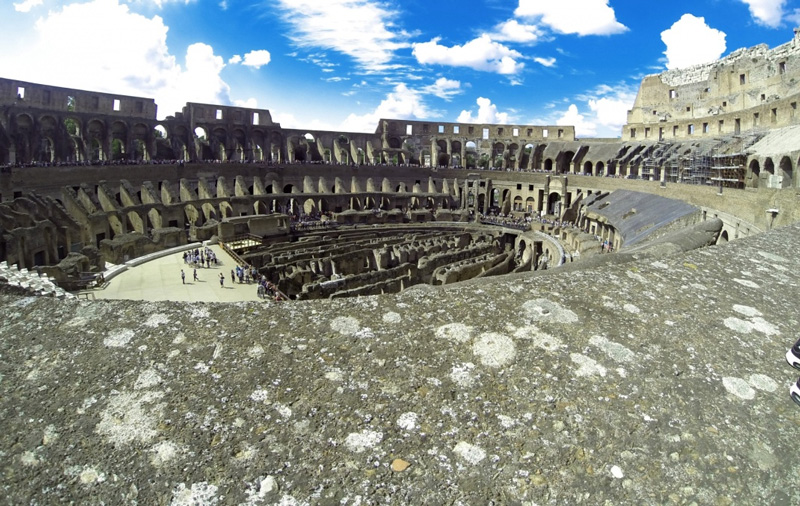
DAY 2 – VATICAN CITY
On the other side of River Tevere, Vatican Hill is the home of the tiny state of Vatican City. The immense St. Peter’s Basilica dominates the extraordinary Piazza framed by the magnificent four-column-deep colonnades designed by Gian Lorenzo Bernini. The Basilica is an extraordinary casket for some of the world's most beautiful works of art, such as Michelangelo’s “La Pietà” and Bernini’s “Baldacchino”, along with works of the most important artists of the Renaissance, from Raphael to Canova.
Inside the Vatican Museums, you will be astonished by the exquisite and unique Sistine Chapel, the “Sancta Sanctorum” (“Holy among the Holiest” in Latin) of the Roman Catholic Church, where cardinals gather to elect the new Pope! The Sistine Chapel takes its name from Pope Sixtus IV della Rovere (pontiff from 1471 to 1484), who had the old Cappella Magna restored between 1477 and 1480. The decoration of the walls was executed by a team of painters, Pietro Perugino, Sandro Botticelli, Domenico Ghirlandaio and Cosimo Rosselli, assisted by their respective shops.
Julius II della Rovere (pontiff from 1503 to 1513), the nephew of Sixtus IV, decided to partly alter the decoration, entrusting the work in 1508 to Michelangelo Buonarroti, who painted the Ceiling and, on the upper part of the walls, the lunettes. The nine central panels show the Stories of Genesis, from the Creation to the Fall of Man, to the Flood and the subsequent rebirth of humanity with the family of Noah. Again, towards the end of 1533, Clement VII de' Medici (pontiff from 1523 to 1534) asked Michelangelo to paint the Last Judgement on the altar wall. How could he refuse? And, in fact, he did not, but painted his vision of the Judgement, with a powerful and furious Jesus Christ.

Città del Vaticano: Basilica di S. Pietro
DAY 3 – ORVIETO & CIVITA
Orvieto in Umbria is perhaps the most beautiful hill town in Italy, perched up on a volcanic rock, its history dating back to the Etruscans.
Although just an hour from Rome, the architecture is different, with many of the buildings constructed out of “tufo”, a volcanic rock. Orvieto’s main attraction is its 14th-century Cathedral – a masterpiece of Gothic architecture with a glistening façade of stained glass, mosaics and sculptures. Another attraction is St. Patrick’s Well, a 62-meter-deep (203 feet) feat of engineering characterized by two spiral staircases that wind around the well (yet never meet), with 248 steps down to the water. A pleasant guided tour along a straightforward route makes it possible to know Orvieto’s underground world, created by its ancient inhabitants over about 2,500 years of uninterrupted digging. A tour at the discovery of a millenary, surprising and unexpected “Underground City”, you will surely enjoy it!
At lunch, don’t miss “salumi di cinghiale o cervo” (boar or deer sausage) and pecorino cheese and taste the region's prized white truffle oil together with the delicious white wine of the area, Orvieto Classico!
Civita di Bagnoregio, the spectacular “borgo” slowly sliding towards the valley, is also known as the “Dying City”. The town is noted for its striking position atop a plateau of friable volcanic tuff overlooking the Tiber river valley. It is in constant danger of destruction as the edges of the plateau collapse due to erosion, leaving the buildings to crumble as their underlying support falls away.
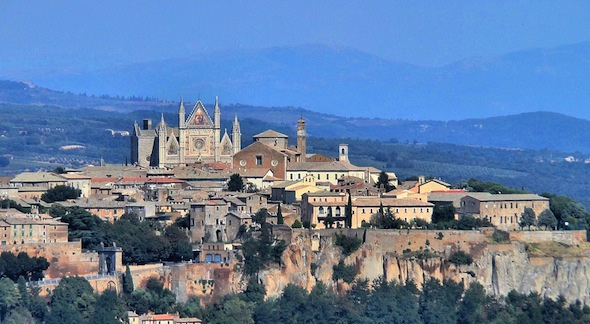
DAY 4 - SPOLETO
On the way to Assisi lies Spoleto, a medieval hill town in the Umbria region, famous for its summer music festival, “Festival dei Due Mondi”. Thick walls and a magnificent gorge surround the city, and fine medieval and Roman monuments sit along the streets. The Duomo is one of Spoleto's most pleasing sights: begun in the 12th century, the cathedral is set against a backdrop of hills and valleys.
The Rocca is high above the town, a Papal fortress used as a prison until the 1980s. Ponte delle Torri's massive bridge, built in the 14th century, functioned as a bridge and aqueduct; we can walk on it for breath-taking views of the valley and gorge below.
In Spoleto, try the typical “torta al testo” (bread prepared with water, flour, salt, pepper, and olive oil and cooked on a particular marble stone in a wood-burning oven); sometimes it is stuffed with ham, sausage, or simply with herbs prepared in olive oil.

DAY 5 – ASSISI
Assisi is the birthplace of Francis, the nobleman who renounced all his possessions to devote his life to helping the needy and became the most acclaimed Saint of the Catholic Church.
The splendid Basilica, one of the emblems of Christianity, located on Mount Subasio and overlooking the entire valley, is dedicated to him. Apart from being a strong appeal to millions of religious believers, the Basilica is a monument of great artistic value. The construction of the Basilica began two years after his death, in 1228, and between the end of the 13th and the beginning of the 14th century, the basilica's walls were frescoed by the best artists of that time: Giotto, Cimabue, Simone Martini and Pietro Lorenzetti. St. Francis' Basilica consists of two churches laid upon each other and a crypt containing the tomb of the Saint. The Lower Basilica presents a simple facade with a double front portal embellished with a rose window and a mosaic. The interior is decorated with frescoes by some of the most important painters from 1200 to 1300, from Cimabue to Giotto, from the Lorenzettis to Simone Martini.
In the Upper Basilica, you will admire the frescoes of the life of St. Francis, painted by Giotto, the stories of the Old and New Testament covering the entire nave, and other beautiful frescoes by Cimabue and Torriti.
Another figure who profoundly influenced these places is Saint Clare, to whom the homonymous Basilica -with a facade made of white and pink stone and divided into three sections by horizontal cornices - is dedicated. The interior frescoes and the remains of the Saint are visible through a window in the crypt.
Try to enjoy the mystical atmosphere of Assisi:
"Be praised, my Lord, through our sister Mother Earth,
Who feeds us and rules us,
And produces various fruits with coloured flowers and herbs."
(St. Francis, Prayer of the Canticle of the Creatures)

DAYS 6, 7 & 8 – VAL D'ORCIA
Val d’Orcia is one of the most fascinating places in Italy, included by UNESCO in the list of World Heritage Sites. Its landscape is a part of the agricultural hinterland of Siena, redrawn and developed when it was integrated into the city-state's territory in the 14th and 15th centuries to reflect an idealized model of good governance and create an aesthetically pleasing picture. The landscape’s distinctive aesthetics, flat chalk plains with almost conical hills and fortified settlements on top, inspired many artists. Their images have come to exemplify the beauty of well-managed Renaissance agricultural landscapes.
Your first stop will be in Pienza, “Pio’s town”: here, Pope Pius II decided to build the perfect palazzo for his papal court according to the project of an “Ideal City" drawn up by artists such as Piero della Francesca. From the loggia of the Palace, you will enjoy a breath-taking panorama of the valley. Pienza is also the area of the typical “Pecorino di fossa” cheese, an absolute delight to the palate!
In Montepulciano, our friend Francesca will lead you to discover this beautiful town full of stories, legends and thousand flavours, introducing you to the excellent products of this unique land: olive oil, pecorino cheese and Vino Nobile di Montepulciano.
Then, you will get to Montalcino, one of the prettiest hill towns in Tuscany. Around the village, rows of olive trees, precious grapevines and yellow fields create an enchanting landscape. Here you may visit a Brunello winery to taste the most famous SupertuscanSupertuscan wine, probably the best Italian red!
Then, you will relax in Bagno Vignoni, a tiny and charming village where the main square is a pool 49 meters long and 29 wide, from the bottom of which bubble up several hot springs whose therapeutic quality has been renowned since antiquity! All this creates such a pleasant sensation, it will be so hard to leave!
Later on, you may experience the rhythms and beauty of authentic Tuscan food in an authentic Cooking Experience set in a real farmhouse in the heart of Italy, surrounded by rolling hills, vineyards and olive trees.
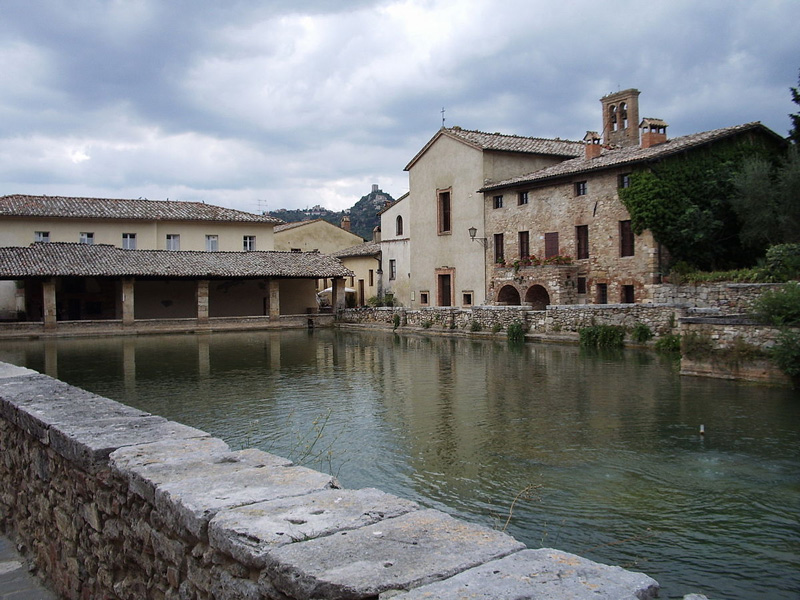
DAY 9 – SIENA & SAN GIMIGNANO
In Siena, the city of the Palio, you will walk on the famous Piazza del Campo, the concave square where horses run twice a year in a dangerous race that symbolizes the city’s freedom. On the days of the Palio, the whole town goes crazy; read about it in our BLOG. Indeed, you will not forget the colour of frontages and roofs, the renowned colour “Sienna”, a pigment first produced during the Renaissance, that makes the city lovely and warm. And don’t forget to taste the Senese sweets: “cantucci” (biscuits with toasted almonds), “ricciarelli” (soft biscuits with icing sugar), “panforte”(cake with fruit nuts and spices) and “cavallucci” (biscuits with honey, walnut, candied fruits and spices. Travellers who love dessert will be delighted!
In the afternoon, you will stroll with your head upwards along the streets of one of the most beautiful cities in Tuscany, San Gimignano, also known as the "Medieval Manhattan", thanks to its old and impressive 14 towers that dominate the town skyline. Originally the towers were 72, built by patrician families probably to demonstrate their wealth and power. Seven of San Gimignano's towers are around Piazza del Duomo; the tallest one is Torre Grossa, 54 meters high, dating back to 1298.

DAY 10 - FLORENCE
IWelcome to Florence, the land of Dante, Leonardo da Vinci and Giotto!
Despite its international fame and greatness, Florence is also a small city, whose history is interwoven with that of its passionate citizens for more than one thousand years.
In Piazza Duomo you will be astonished by the Duomo, with the incredible Brunelleschi’s cupola, a masterpiece of art and architecture whose building techniques building are still covered with a veil of mystery. Beside it, Giotto’s Campanile (Belltower) and the Baptistery, one of the oldest buildings in the city, with its famous bronze doors made by Pisano and Ghiberti in the 14th and 15th centuries. In Piazza della Signoria you will walk in the middle of bronze and marble masterpieces by Giambologna and Cellini inside the marvellous Loggia dei Lanzi, and will admire the imposing Palazzo Vecchio, one of the symbols of Florence and still the seat of government of the city. You may also spare some time to relax, visiting a typical market for shopping, strolling through the pedestrian streets of the city and crossing the oldest bridge in Florence, “Ponte Vecchio” (Old Bridge), rich of jewellery shops.
Our itinery include the visit to the Uffizi Gallery, one of the most famous museums in the world for its extraordinary collections of paintings. Here you will admire works by Botticelli, Michelangelo, Leonardo da Vinci, Caravaggio and a lot more. Also, you should not miss Galleria dell’Accademia, hosting Michelangelo's David, the most famous sculpture in the world!
At lunch, enjoy “Panino con Lampredotto” in a typical Florentine market, while for dinner move to Oltrarno where Florentines like to dine. Here you may taste the simple yet unforgettable recipes of the Tuscan tradition, such as "Crostini", "Panzanella" and "Peposo". And remember, Florence is the home of "Fiorentina" steak! In case you are a vegetarian, don’t worry: Tuscan cuisine offers tasty alternatives like “Pappa al Pomodoro” or “Ribollita” (for an overview of Tuscan cuisine see our BLOG).

DAY 11 – PISA
Pisa is famous worldwide for its “Torre Pendente” (Leaning Tower), but its wonderful square, Piazza dei Miracoli, set over an ample greenfield, hosts three other whiter-than-white masterpieces of exquisite Medieval art: the Cathedral, the Baptristy and the “Camposanto” (Graveyard). They are so unique that their creation originated a new style, "Pisan Romanesque".
This area was chosen to construct the Duomo of Santa Maria Assunta strictly for its centrality; founded in 1064, it was intended to celebrate the grandeur of Pisa during the Marine Republic’s epoch of power. "The temple of marble white as the snow"; that’s how the structure is described on the gravestone of its architect, Buscheto di Giovanni Giudice. Consisting of five naves with its transept divided into three naves, it is surmounted by a splendid dome encircled by a loggia. The Duomo’s façade and exterior lateral sections feature elaborate decoration in marble (which can also be seen on its interior), mosaics, and bronze.
In front of the Cathedral stands the Baptistry, also in a particular version of the Romanesque style. Initiated in 1152 by Diotisalvi, the Baptistry was finally completed in the 14th century; Gothic elements were added then. Of cylindrical form and circled by arcades of columns, this structure in white marble even boasts impressive acoustics.
The Camposanto closes the northern end of the complex's piazza. This monumental cemetery, begun in 1278, is bordered by a marble fence and houses a cloister at its centre. Unfortunately, most frescoes that once coloured its walls were destroyed in a fire in 1944 during the battle for Pisa.
Ultimately, the true symbol of Pisa is the Campanile, the Leaning Tower, which completes the image of this city. Because of land sinkage beneath it, the Tower stands at a significant incline. Its construction started in 1173, but the Tower was not completed until the second half of the 1300s. In cylindrical form, the blind arcades of its lower part mutate into six floors of loggias, repeating motifs from the Duomo. Inside, a spiral staircase of 294 steps leads to the heights of one of the most famous towers in the world, where the lovely belfry and a spectacular view of the surrounding landscape await.

DAYs 12 & 13 – CINQUE TERRE
Welcome to Cinque Terre, the beautiful villages on the Ligurian Sea included in the UNESCO World Heritage Site list. You will be stunned by the sea views and the contrasts between the sea and the cliffside. From Monterosso, you may reach the other fishing villages by train or on foot: Corniglia, Vernazza, Manarola and Riomaggiore. The vineyards, typical of this area, contribute to creating a unique landscape with dry-laid stone walls, winding paths, enchanting beaches between cliffs and clear waters!
The area is divided into five seaside and agricultural villages enriched with colours, simplicity and charm. The first stop in Cinque Terre is Monterosso, a well-known tourist destination embellished with elegant villas and a large beach. The old town centre, whose narrow alleys clamber up the hill, is home to the Gothic parish church of San Giovanni Battista and the 17th-century church of San Francesco, which is connected to the convent of the Capuchins.
Next is Vernazza and its charming marina, surrounded by the medieval little town and its characteristic little piazza, two Genoese lookout towers and the enchanting Gothic two-storey church dedicated to Santa Margherita d’Antiochia.
Just a short distance away is Corniglia, a village perched on a promontory ridge and connected to the beach by a stairway with 365 steps. The view of the village and the surrounding vineyards is just marvellous.
Then, Manarola, with its enormous black cliff overlooking the sea and its colourful houses, apparently coming out of the rock.
The last town in Cinque Terre, and the heart of the homonymous park, is Riomaggiore, a picturesque fishing village with tall, narrow, pastel-coloured houses and alternating light and darkness coming from the tight alleyways.
Do you like anchovies? They are a local speciality of Monterosso! Have you ever tried “Linguine al Pesto”, a sauce made from basil leaves, garlic, salt, olive oil, pine nuts and pecorino cheese? And what about Ligurian wines? Sciachetrà will seduce you!!

DAY 14 - PARMA
Your next destination is called “The Capital of Food”, and this is a well-deserved denomination, as Parma is known worldwide for its delicious food products.
Parma is known for its delicious food products. First, you will visit a Parmigiano Reggiano factory, where you will see cheese masters at work: an extraordinary way to get into the area's production culture and discover how a true gastronomic gem is made (more about Parmesan cheese in our BLOG).
Later on, visit a Parma ham factory, where you will learn the secrets of the most delicious ham, Prosciutto di Parma (to know more about raw ham in Italy, read the article in our the BLOG)
And finally, you may savour authentic Italian cuisine in a fun-filled cooking class led by a local “rezdora” (a female cook in the Parmesan language). Immerse yourself into the tradition of fresh Italian pasta and study the secrets of preparing pasta dough from scratch, using just flour and eggs. You will make your own “Tortelli d'erbetta” (Parma's most traditional pasta with a filling of ricotta cheese and chards) and delicious tagliatelle with tomato sauce – all local ingredients! Once your fantastic meal is ready, you will enjoy what you prepared, matched with a glass of local Lambrusco wine. A very tasty experience at the end of an unforgettable day!
The tour is over, but the memories of a fantastic journey will accompany you for a lifetime!
Arrivederci for another tour with VITOR, Visit Italy on the Road.
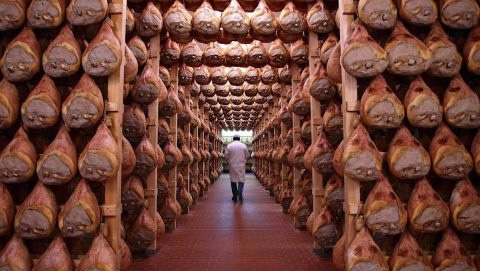
DAY 15 - MIALN
Milan is, first of all, the Fashion Capital of Italy! The showrooms of all Italian manufacturers are located in the city, and here buyers from worldwide distribution find the one and only “Italian Style”! But Milan is not only fashion, it is also and above all art, beauty and culture! Piazza del Duomo is the geographical and historical centre of the city. Palaces surround it with arcades; in the middle, you can see the Duomo, one of Europe’s biggest Gothic cathedrals, whose construction started in the 14th and ended in the 20th century. And on the Gran Guglia, the cathedral’s highest spire, the Madonnina, a symbol of Milan, stands. On the left of the square, the 19th-century Galleria Vittorio Emanuele II links the grand Piazza del Duomo with Piazza della Scala, featuring mosaics and a wrought iron and glass roof.
Then stroll down the streets of “Quadrilatero D’Oro”, the heart of the fashion industry, admiring the shop windows of Prada, Armani, Versace, Ferragamo, Dolce & Gabbana and Valentino. The multi-concept store by Giorgio Armani, Spazio Armani, in the elegant Via Manzoni, extends for 6,000 square meters and offers fashion showrooms, furniture, flowers and hi-tech Sony equipment. After shopping, enjoy an aperitif or a coffee at the Emporio Armani Cafè upstairs or book a table at the Japanese restaurant Nobu. Or taste a gorgeous Cappuccino at Pasticceria Cova, as locals often do in via Montenapoleone, “Montenapo” for the Milanese!
At dinner, what about a tasty yellow “Risotto alla Milanese”? According to an ancient tradition, the Duomo is where Risotto alla Milanese was “born”, invented by a boy who worked for the stained glass artist Valerio di Fiandra, nicknamed “Zafferano” for its habit of adding spices to his colours. One day, he also put some saffron in the rice, and the result was a great success!

DAY 16 – LAKE COMO
The magnificent scenery of Lake Como (also known as “Lario”) has enchanted artists and travellers for centuries: from French novelist Flaubert to musicians of the calibre of Gioacchino Rossini, Giuseppe Verdi, and Vincenzo Bellini; it was here that he composed his opera Norma. Today Lake Como continues to attract members of the international jet-set and celebrities who appreciate the Lake's evocative beauty and surroundings.
The Lake (one of Lombardy's several incomparable lakes) is of a characteristic upside-down Y-form. The town of Como is situated on its southwestern arm, Lecco on the southeastern arm, and Colico on that northern. From the Lake’s shores, one can enjoy multiple fascinating views: suggestive “Borghi”, splendid villas and lush gardens await visitors searching for charm and relaxation or a little culture and contact with nature.
Breathtaking villas, one after the other, encircle the lake, a resort destination of the nobles of Lombardy since the 16th century. Cernobbio is the site of Villa d’Este(1600s), the location of Alfred Hitchcock’s celebrated film The Pleasure Garden”, and of Villa Erba, one of the most important Italian lake villas from the 1800s - today it is an internationally-known convention and expository complex. In the nearby Lenno, you will not miss Villa Balbianello, where “Star Wars: Episode II” and James Bond’s “Casino Royale” were shot. You’ll be amazed by its gardens, a perfect scenery for movie lovers.
Along the coast is Tremezzo, famous for its Villa Carlotta, with terrace gardens and a museum boasting works by Canova, Thorvaldsen, and Hayez. It was built in the 17th century for a powerful Milanese family. In the second half of the 19th century, Princess Marianne of Nassau bought the villa and gave it to her daughter Carlotta as a wedding present, hence the name. Her husband was a keen botanist and, over the years, turned it into the lush garden we see today.
Where the Lake’s three arms meet, you will visit Bellagio and Villa Melzi. The Villa, built in 1808, is much sought-after for its botanical park, with sculptures and a garden renowned for its beautiful azaleas and rhododendrons.
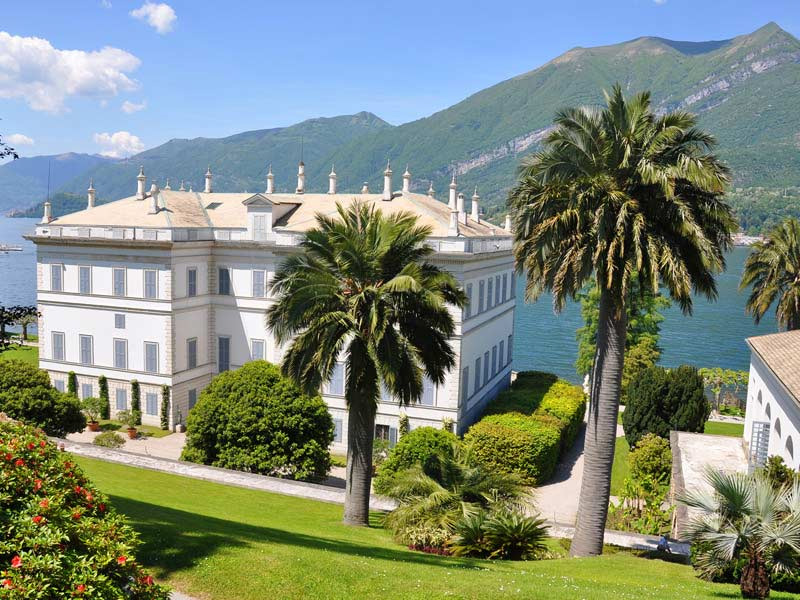
DAY 17 - VERONA
In a stretch of land designed in accord with the bends and twists of the River Adige, we find Verona, a visually stunning city of excellence. It is a city of many faces whose history can also summarize Italy's history – think of the works left by the Romans, the Medieval streets and the “palazzi” of the Renaissance.
The city’s commercial hub is Piazza delle Erbe, where the original Roman Forum was. This piazza represents the synthesis of several different historical moments: the 13th-century buildings – among which Casa dei Mercanti (House of Merchants) stands out - the painted facades of the Mazzanti Houses and the Madonna Verona Fountain, with its central statue from the Roman Epoch. Also dating back to Roman times is the most symbolic monument of Verona, the Arena (1st century B.C.). Originally constructed to host gladiator combats, it saw a long period of abandonment before it returned to the limelight with a new form of entertainment in 1913: after having hosted the premiere of Aida in that year, it has been known around the world for the sounds of opera that emanate from its stage.
Then, Romanesque Verona lies in its imposing Duomo, as well as in the Cathedral of St. Zeno, and in Castelvecchio, which looks out from the banks of the Adige; it symbolizes the Medieval power of the Scaliger family, to whom the realization of the crenellated Scaliger Bridge is attributed.
The palazzi of Verona narrate its long history of wealth and power. In Piazza dei Signori - which sits under the dominating Lamberti Towers - the portico of the Loggia del Consiglio catches the eye; in the 16th century, political life took place here, while the Palazzo di Cansignorio and Palazzo del Comune (or “della Ragione”) were the seats of military, judicial and administrative power. Nearby lie the Scaliger Arches, in the same-named piazza, and some of the most suggestive views of the city, including glimpses of the monumental tombs of the Lords of Verona.
Finally, the Verona of Shakespeare and the “star-crossed lovers” is a worldwide legend and lives indefinitely through the places made famous in Romeo and Juliet. Yet the original literary work was created by Luigi da Porto, a writer from Vicenza, in the 1500s; it eventually circulated in Europe, reaching England. It was the Bard who rendered it the immortal story it is today, allowing Verona to rest as one of the most admired and visited places in the world.
And remember: Verona is a very elegant city, famous for its classy shops!
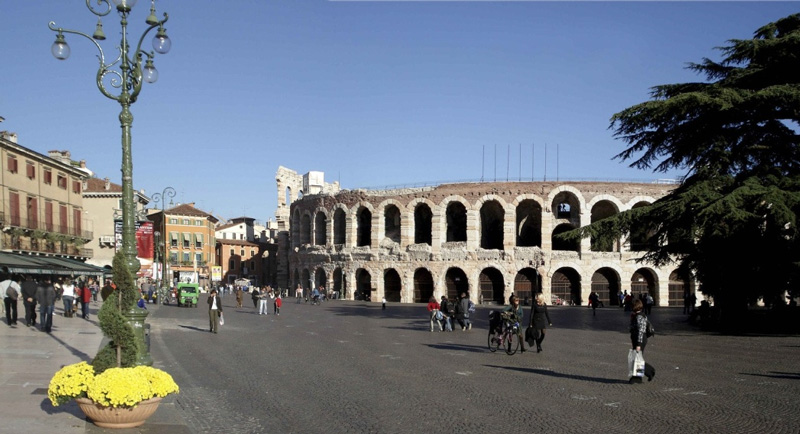
DAYs 18 & 19 – STRA'
Today you will drive to the area of the Brenta river, a direct waterway connecting the Venetian Lagoon with Padua. The two shores of the river are still enlivened by many attractive sites, like fancy villas, small towns and green areas.
As you approach the small town of Strà you’ll see a long wall with wrought iron gates and a neoclassic-style façade. Here you are in Villa Pisani, once the luxury dwelling of the Pisani, one of the most powerful Venetian families in the 18th century. The building of Villa Pisani consisted of 114 rooms, in honour of Alvise, the 114th Doge of Venice, and the most celebrated Venetian painters were commissioned to decorate the interiors. Also, the park is worth visiting for a pleasant walk through the Labyrinth, the elegant Coffee House, the original Stables and the 20th-century straight basin.

DAYs 20 & 21 - VENICE
Welcome to the “unique” Venice, the “city on the lagoon”! You will be astonished by its beauty and charm!
You will start your visit with Piazza San Marco (St. Mark’s Square) and the Basilica interior, a 900-year-old marvel of architecture! The church is unique in Italy for its golden Byzantine and Medieval mosaics, intricate stone and marble traceries and exuberant Middle Eastern domes. Near St. Mark’s Basilica is Palazzo Ducale, the most impressive secular building in Venice and once the official residence of the supreme authority of Venice, the “Doge”. A masterpiece of Gothic architecture, the Doge’s Palace is an impressive structure composed of layers of building elements and ornamentation, from its 14th and 15th-century original foundations to the significant Renaissance and opulent Mannerist adjunctions.
Then, you may visit Santa Maria Gloriosa dei Frari (Saint Mary’s of Friars), striking for its colossal size and the quality of its works of art, including masterpieces by Titian, Giovanni Bellini and Donatello, and several splendid tombs. Also, you may explore the streets and savour everyday life in an intricate maze of ancient narrow alleyways, lively squares with magnificent buildings and meandering canals, and finally, walk on the Rialto Bridge, Venice’s busy "heart". Last but not least, you will enjoy a Gondola ride on the city’s canals: a jump back in time when Venetians moved only on the water.
At lunch, you may savour Venice’s finger food, the famous "cicheti”. There is tremendous variety, and options include anything from simple cheese or salami to almost any kind of seafood, fried and grilled vegetables, sweet and sour sardines, creamy codfish and much more!
Rich in traditions, Venice offers a wide selection of unique artisan products. In the city of the Italian carnival, the typical Venetian masks are a must. The cost of the original ones is relatively high, but it is really worth it! Also, don’t miss an authentic Murano glass object: each product is made and painted by hand, but be sure you buy an original product from Murano, guaranteed by a label or a signature (and the seller), not a Chinese copy!
You may also enjoy an excursion to the main islands of the Venetian Lagoon: Murano and Burano. The first stop on your visit will be Murano. Here, you may visit a traditional glass atelier, where glass-making families have been carrying on the art of glass blowing for over 700 years. You’ll be amazed by the simplicity of the tools used and by the artist’s intense concentration in the heat and smoke of the burning furnace. The excursion will continue to Burano, the bustling island famous for its colourful houses and the hand-crafted lacework, true works of art made of lace that you may purchase at local shops or street stalls.
Finally, at dinner, you will be delighted by the flavours of the regional cuisine of Veneto, boasting delicious recipes such as “Sarde in saor” (marinated sardines), Risotto with seafood, or the typical “Baccala' mantecato”, to finish with a fantastic “Bussolà”, the ring-shaped and cinnamon-flavoured cake! (read more about Venetian cuisine in our BLOG).

Day 22 - CASTEL DEL MONTE
Recognized as a World Heritage Site in 1996, Castel del Monte is a brilliant example of medieval architecture located on a hill in the Murge area. Commissioned by the eclectic and cultured Frederick II, Duke of Swabia, Emperor of the Sacred Roman Empire, the Castle is an exceptional work for the perfection of its forms and the fusion of cultural elements from different periods and places. The Lions at the monumental entrance are typical of Romanesque art, while the friezes that decorate some parts of the castle belie Classical inspiration. And the floor's design and materials are partly reminiscent of Islamic art. The number 8 is the principal factor in the castle's plan: 8 sides of the castle, 8 rooms on the ground floor and first floor, arranged to form an octagon, and 8 the massive octagonal towers.
It is still unclear what led Frederick II to build this brilliant piece of architecture. An air of mystery surrounds it and is thus the fount of many legends and the charm of this unique place.
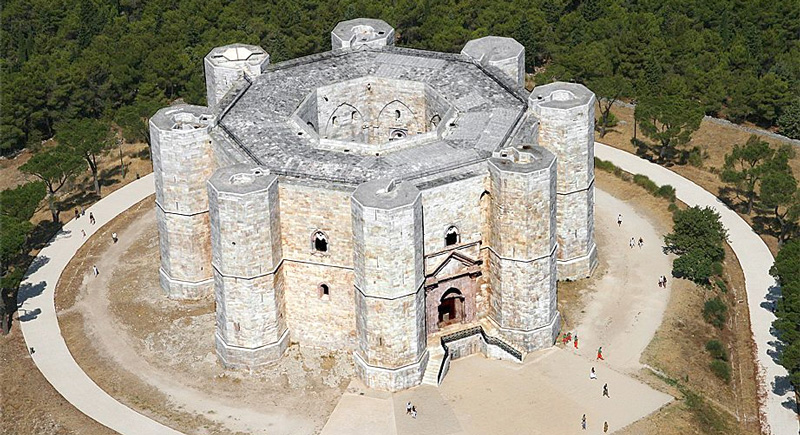
DAY 23 ALBEROBELLO & MARTINAFRANCA
The Trulli are famous worldwide for their beauty and unique characteristics and represent one of the most extraordinary examples of Italian folk architecture. They were built in a particular historical period when the construction of stable dwellings was highly taxed; the region's inhabitants thus boasted a great capacity to adapt and an exceptional cleverness in coming up with the Trulli, temporary houses built with the local stone. From precariousness to stability - the process of transformation and recovery and the deference to the originality of the work earned the Trulli of Alberobello their recognition as a World Heritage Site.
In Alberobello, the capital of the Trulli, each Trullo has a different shape and size. Unique constructions are sometimes combined in a complex of communicating houses, while others are built on two levels. Most feature a grey cone-shaped roof, ending with a sphere or hemisphere shape. The interior, arranged as a single chamber, comprises niches for a fireplace, bed and furniture. The structure assures excellent indoor climate control: cool in summer and warm in winter!
Martina Franca is a charming baroque town 400 metres above sea level. The era of greatest splendour for this city was undoubtedly the 18th century when the most important monuments and churches still dominating the historic centre were built. Baroque is the predominant style; it can be seen in many buildings, and in this city, it has taken on characteristic connotations that distinguish it from the other variations of this artistic and architectural current; in fact, we speak of “Martinese” Baroque.
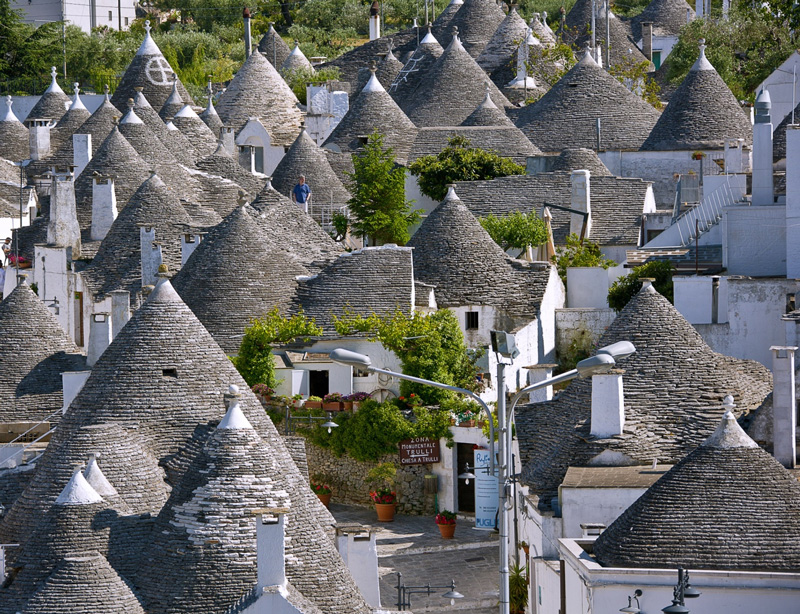
DAY 24 - LECCE
Lying on a plain at the foot of the Salento Plateau is Lecce - the "Florence of the South" - one of the most exciting cities in the region for its architecture, typical of the 17th century.
Of ancient origins, the city experienced two distinct periods of prosperity: the Roman era and the Kingdom of Naples. Under both, the construction of buildings, monuments and mansions increased heavily. These new structures were characterized by magnificent and rich ornamentations that earned this typical architecture the definition of “Leccese Baroque". The imaginative and meticulous sculpting work was facilitated by the fact that the local stone is flexible and easy to inlay. A visit to Lecce can begin with Piazza Duomo, once used as a fortress and today considered the most elegant "salon" in the city. The grandeur of the Duomo, the work of Zimbalo, Cino and Penna, the five-story-tall bell tower, the Palazzo Vescovile (Bishop's Palace), and the Palazzo del Seminario (Seminary) mark the perimeter of the square, one of the monumental works that best represent the magnificence of Lecce’s style.
Not far away, Piazza Sant'Oronzo narrates the city's entire history. The Roman period is visible in the ruins of the Amphitheatre that becomes the exceptional stage for theatrical performances in the summertime, and in part by the high Column - on which stands a bronze of St. Orontius, depicted in the act of blessing - erected in the 17th Century utilizing some of the Roman columns positioned on the Ancient Appian Way. Palazzo del Seggio, known as the "Seat," hosting important art exhibitions, and the Church of Santa Maria delle Grazie, with its interesting frescoes and works sculpted in wood, are the very symbols of the Apulian Renaissance.
Not to be missed is a visit to the Basilica di Santa Croce, where the inspiration of master masonry is visible in every part of the monumental façade that anticipates the beauty of its interior, a harmonious balance between the sobriety of the classical style and the splendour of Lecce's Baroque.

DAY 25 - MATERA
Matera is one of the oldest cities in the world, whose territory holds evidence of human settlements starting from the Paleolithic and without interruption until today. Touring Matera is like experiencing a forgotten past - you feel like setting foot in a nativity scene when you visit this charming city in Lucania. It’s no coincidence it’s referred to as “the second Bethlehem” and was the setting for Mel Gibson’s movie “The Passion” and the last James Bond, “No time to die”.
Matera is widely known as the city of the “Sassi”, the original urban nucleus, developed from the natural caves carved into the rock and subsequently modelled in increasingly complex structures.
In the 1950s, when the inhabitants who lived in the caves dug out of the mountain were forced to abandon those dwellings to settle in modern districts, no one would have ever thought that those grottos - the Sassi - would have become the symbol of a reborn city. UNESCO added the Sassi of Matera to its list of World Heritage Sites in 1993 as a whole and a millennial way of life to be preserved and handed down to our descendants. In fact, it was recognized as a model for living harmoniously with the environment while integrating with it and taking advantage of resources without disturbing the environment.
Geologists call it calcarenite, and ordinary folk refer to it as “tuff”: it’s the rock surrounding Matera that this land’s master artisans learned to work with in ancient times. This brittle, adaptable material is abundant in the mountain that dominates the city, so it seemed only natural for the people from Matera to go up there and dig out that rock to build a home. The extracted material was processed to make the façade of the dwelling. After the first home, others were constructed until the network of houses, tunnels and alleyways became that magical place called Sassi - a gigantic sculpture, a miracle of town planning!
In Matera, you’ll discover one of the most beloved Italian breads. “Pane di Matera" is a bakery product for which only hard wheat semolina and sourdough are used. The characteristics to recognize the bread of Matera are the shapes, croissant or high bread, and a straw-yellow crumb. But besides bread, you’ll not miss other local specialities such as the Caciocavallo cheese or the “Lucanica” sausage.
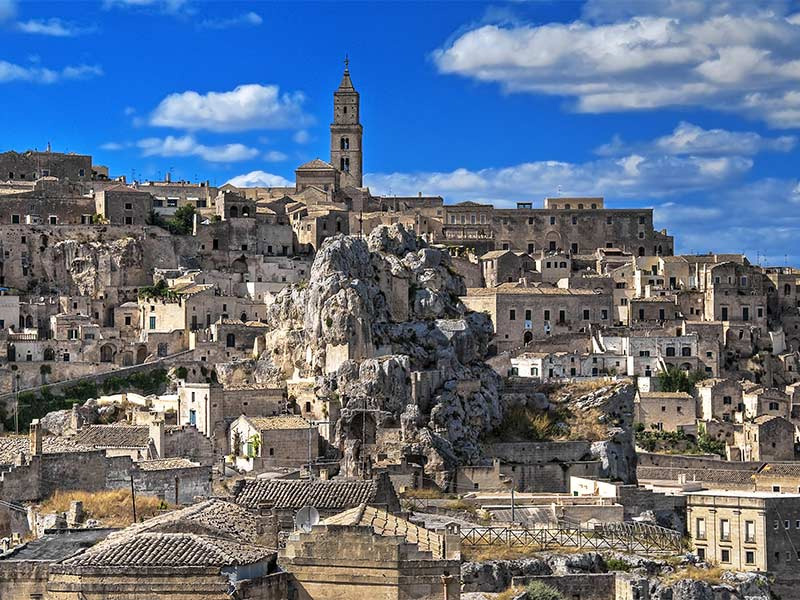
DAY 26 - PAESTUM
Located in the South-East of the Gulf of Salerno, Paestum is an archaeological site of extreme importance, recognised by UNESCO as part of the World Cultural Heritage. Built by the Greeks around the 7th century BC with the name of Poseidon, the city was later occupied by Romans, who made it a thriving colony, giving it its current name.
In addition to its cultural value, the importance of Paestum is linked to the excellent state of conservation of properties, starting from its walls, built by the Greeks and later strengthened by the Romans. Inside them, three majestic temples on a green plain reflect a different light depending on the hours and seasons. Many writers, poets and artists like Goethe, Shelley, Canova and Piranesi were fascinated by this sight, which later inspired them for their works.
These large buildings are a remarkable example of Doric-style architecture. The Temple of Hera, dating to the 6th century BC, is the most ancient building. The Temple of Neptune (5th century BC) is a massive construction made of travertine marble in a warm golden colour that varies at different times of the day. The Temple of Ceres (6th century BC), dedicated to the goddess Athena, was transformed into a church back in medieval times.
Besides its temples, Paestum is famous also for a gourmet speciality that you should taste on site: its “mozzarella di bufala”. Made with the best buffalo milk from the area, “mozzarella di bufala” is closely linked to the land of Campania; the skill it is made reflects the love the cheesemakers put into creating this Italian excellence. We will visit a cheese factory in the area to understand how it is created and taste it freshly made, an unforgettable experience!
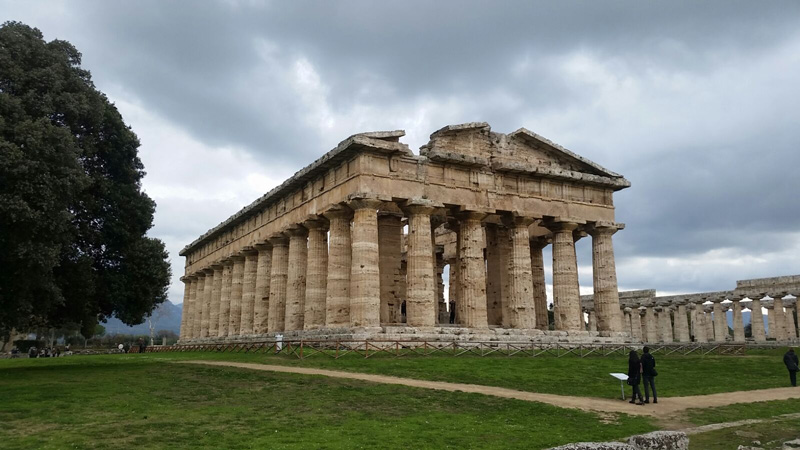
DAY 27 – AMALFI COAST
Welcome to the Amalfi Coast!
Costiera Amalfitana is Italy's most scenic stretch of coastline, a landscape of pastel-coloured villages terraced into hillsides, steep panoramic roads, luxuriant gardens and enchanting vistas over turquoise waters and green mountains.
Considered by UNESCO "an outstanding example of a Mediterranean landscape, with exceptional cultural and natural scenic values," the coast has been a World Heritage Site since 1997. You may go from town to town at the discovery of Amalfi, Positano, and Ravello, three of the most beautiful villages in Southern Italy, world-famous for their charm and colourful architecture.
Amalfi typically has Mediterranean architecture with lanes and characteristic white houses piled one upon the other. In the Middle Ages, it was one of Italy's four powerful maritime republics (with Venice, Pisa, and Genoa). All sea trade in the Mediterranean was once governed by the 12th century “Tavole Amalfitane”, one of the world's oldest maritime codes. A must-see in Amalfi is the Duomo di Sant'Andrea, fronted by an intricately patterned façade, redone in the 19th century. Founded in the 9th century, the Cathedral's subsequent alterations have spared its principal glory, the main portal's 11th-century Byzantine bronze doors. Next to the church lies the Chiostro del Paradiso (1268), or Cloister of Paradise, whose serious Romanesque tone is animated by the Arab elements in its sinuous columns. To escape the bustle of Amalfi, let’s take the famous walk along the “Valle dei Mulini”, a steep-sided valley dotted with ruined watermills – “i mulini” - once used to make paper, an industry for which Amalfi was, and still is, famous.
Positano sits in a splendid panoramic position on one of the most beautiful stretches of coastline. Its enchanting town centre of delightful pastel-coloured houses surrounds the parish church of Santa Maria Assunta; its streets are lined with quaint, colourful shops, and its numerous beaches are world-famous.
Ravello is more elevated than the other pearls of the Amalfi Coast, boasting exceptional views of the coast and its marvellous villas and gardens. French novelist André Gide said they are “closer to the sky than the sea”. Here you may visit Villa Rufolo, built in the 13th century, which hosted popes and kings, and Richard Wagner, who composed part of his opera Parsifal here in 1880. Views from its idyllic gardens are magnificent!
A trip to Cetara is an absolute must. The village is renowned for a particular gourmet speciality, “colatura di acciughe” (anchovy sauce), produced according to an ancient procedure for generations. Spaghetti with colatura di alici is the area's typical recipe, a dish you will remember forever. Discover the secrets of the liquid gold of the Coast in the article in our BLOG.
At dinner, don’t miss Spaghetti with clams in olive oil and garlic sauce, or Seafood Risotto, with a glass of excellent Greco di Tufo white wine.

DAY 28 - CAPRI
With a steep, jagged coast and encircled by the famous “Faraglioni” (sea stacks), enormous and uniquely shaped boulders, and by numerous caves that tell of evocative plays of light, Capri offers a landscape of wild beauty sculpted by wind, sea and the hand of man. The most famous of these caves is the “Grotta Azzurra” (Blue Grotto), closely connected to the history of tourism in Capri.
Its discovery by the ancient Romans is hinted at by countless archaeological finds - e.g. Villa Jovis, whose construction was commissioned by Emperor Tiberius.
The island continues to be both a legend and a favourite destination for travellers, intellectuals and the international jet-set - "performing" at any given time in the legendary “Piazzetta”, the real-time theatre of the island's 'Dolce Vita'. Beyond sea and nature in all their charm, Capri offers many chances for excellent shopping: elegant boutiques and artisans' studios selling “Made in Italy” items and typical products alternate along the characteristic sidestreets and alleyways. Moreover, the flavoured local food is tied to the island's maritime and peasant traditions.
The island is associated with the myth of the Sirens due to the presence of the homonymous rock of the Sirens characterizing the bay of Marina Piccola. Servius's commentary on the 5th song of Virgil's Aeneid is among the sources that feed the legend. The poet narrates half-bird and half-woman creatures that would have lived in Capreae and who, with their songs, bewitched the sailors and sent them against the rocks. On the other hand, the physical conformation of the island, made of coves, caves and precipices, makes it perfect as a refuge for these mythological beings.

DAY 29 - POMPEI
Pompeii, the Roman city excavated from the ashes of Vesuvius, has been a UNESCO World Heritage Site since 1997!
In 62 AD, the city was partially destroyed by an earthquake. As its reconstruction was still ongoing, on August 24, 79 AD, the eruption of Vesuvius covered the city and its suburban villas with a thick layer of stones, ashes and lapilli (thick, glassy lava). On the other hand, Herculaneum disappeared beneath a flood of volcanic mud.
The ruins of the ancient Roman cities offer an unparalleled window into the quotidian life of classical antiquity. Here you can understand how the Romans of the 1st century AD lived: from brothels and lavatories to posh dining rooms and bathing establishments, including modern spas, health clubs and gyms. The eruption of Mount Vesuvius destroyed the town in 79 AD, and the debris ejected by the volcano covered more than 3,000 people from the volcano.
Due to its healthy climate and pleasant scenery, Pompeii was a holiday resort for wealthy Romans. It is now famous for its civic buildings lining the streets, which are still intact today. The Surgeon’s House, the House of the Faun and the House of Chaste Lovers are exceptional examples of the epoch’s architecture. Another unique building is the House of Mysteries, deriving its name from the murals depicting the Dionysian cult's initiation rites (i.e., the mysteries).
A peculiar characteristic of Pompeii is the florid graffiti covering the walls in just about every building; when the volcanic eruption happened, Pompeii was set to carry out elections in the days ahead – hence the writings and ideograms, which feature both political and sexual content.
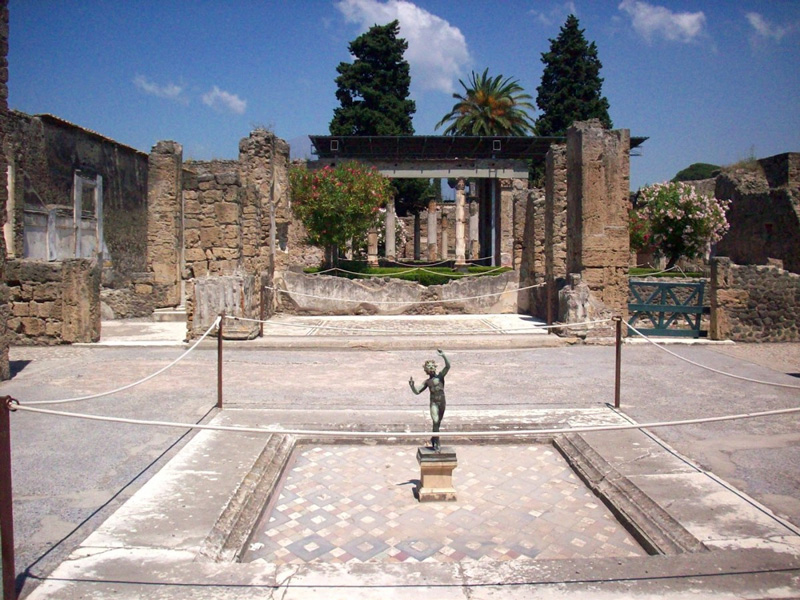
DAY 30 - CASTELLI ROMANI
The area south of Rome is known as “Castelli Romani” (Roman Castles). The entire area originated from a series of volcanic eruptions that shook an original crater, creating some lakes. The area, a traditional destination for the out-of-town excursions of the Romans, is dotted with several pretty hill towns famous for their ancient history and highly regarded wine: Castelgandolfo, the summer residence of the pope, Rocca di Papa and Grottaferrata, known for their culture and gastronomic delicacies, Frascati, famous for its breathtaking views and its sweet and refreshing white wine named after the city, are only some of them.
The tour is over, but the memories of a fantastic journey will accompany you for a lifetime!
Arrivederci for another tour with VITOR, Visit Italy on the Road.
